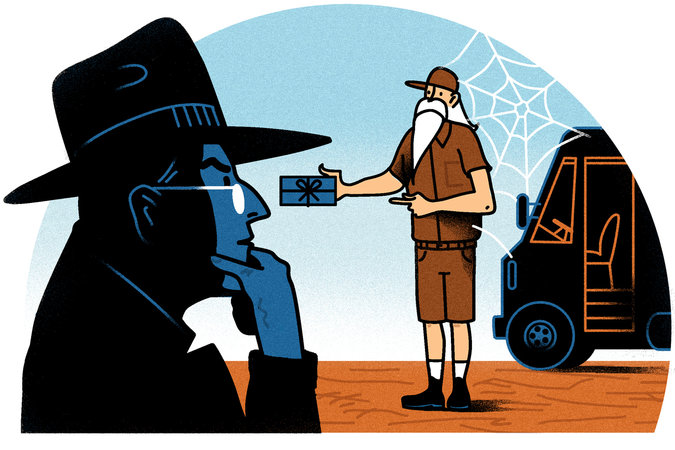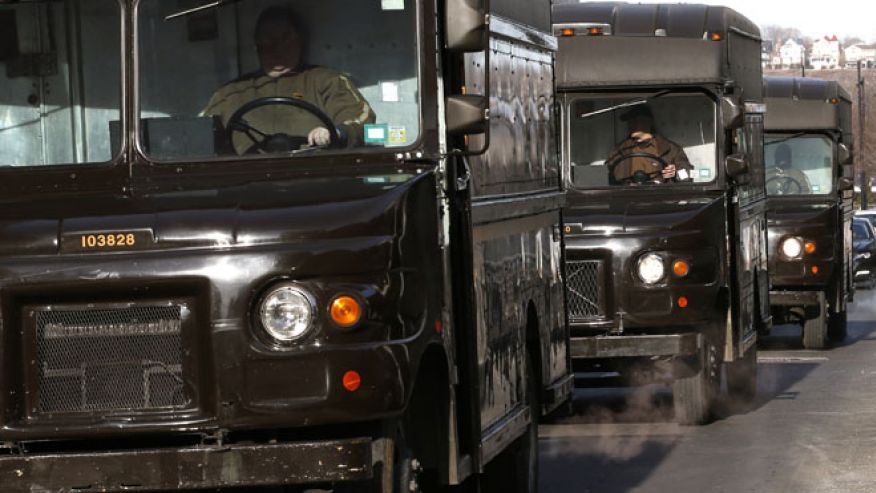It’s been a little over two years since the Haggler’s passport vanished. Longtime readers may recall the particulars: While visiting Stanford University, the Haggler had his passport shipped from Manhattan overnight via United Parcel Service, for a quick and unscheduled trip to Canada. Days passed, and no passport arrived. Calls were made. Facilities were searched. More calls were made. More facilities were searched.
The document was never seen again. Poof. It had vanished
“Wait just a minute,” the Haggler can hear readers exclaim incredulously. “What about the law of conservation of mass, as stated by the 18th-century French chemist Antoine Lavoisier, which holds that mass can neither be created nor destroyed?”
Well played, readers! Here’s the thing: That law was discovered long before U.P.S. was founded. Seriously, if U.P.S. had been around in the age of Lavoisier, the guy would never have called it “the law of conservation of mass.” It would be more like “a suggestion” or “a guiding principle with a glaring exception.” Because U.P.S. has the ability to make mass evaporate.
Or so it seemed. A few weeks ago, a woman at Stanford called with some remarkable news.
“Your passport just arrived here,” she said.
Well, well. The Haggler speculated about what this document had been up to, lo these many months. Perhaps it had been flying around the world, getting stamped in exotic countries. But the truth was mundane.
“We traced it to a pickup point of a U.P.S. letter drop box by an office building in Westbury on Long Island,” wrote Susan Rosenberg, a U.P.S. spokeswoman.
That’s right: The package was placed in a U.P.S. drop box on Long Island. And apparently it looked precisely the way it did when it was initially mailed. Nothing out of the ordinary, except for its two-year absence from the U.P.S. system.
So what happened here? How did this package wind up in Westbury, and where had it been languishing? U.P.S. could offer only theories.
The first, Ms. Rosenberg said, was that a U.P.S. driver had somehow mixed up that package with shipping supplies that were then dropped off at some company on Long Island.
“Our drivers deliver a lot of supplies,” she explained in a phone interview, “and the conjecture is that somehow, your express envelope got put together with supplies and delivered to another building, in a bundle of supplies. Somebody who works in Westbury must have eventually looked at the envelope and realized, ‘Oh, this has a label on it.’ ”
And into the drop box it went, then off to Stanford.
Ms. Rosenberg emphasized that this was just a theory. It appeared to be the best that a U.P.S. brain trust of wayward-package theorizers could conceive.
But one wonders: Wouldn’t a package that had been out of the U.P.S. system for more than two years raise a red flag as it re-entered the system? Wouldn’t a scanning device bleep and deliver a “Huh?” kind of noise?
Not necessarily, Ms. Rosenberg said. The package was lost so long that it had effectively aged out of the system. Which apparently means that it was treated like a brand new package.
Continue reading the main story
Continue reading the main story
Advertisement
As the Haggler was trying to fathom all this, “Planet Money” — the consistently outstanding NPR podcast about all things economic — did a show called “The Future of Work Looks Like a U.P.S. Truck.” It was about the almost alarming number of ways that U.P.S. tracks its drivers and their trucks. The vehicles are studded with sensors so that the company can keep track of just about everything — when a driver opens and closes the truck’s door, starts the truck, turns off the truck, puts on a seatbelt. The company even keeps tabs on when a driver puts a truck in reverse, and for how long.
All of this data is sent to Paramus, N.J., where it is sifted by engineers on an endless quest to shave seconds off of delivery and pickup times.
This focus on time has yielded results. A driver told “Planet Money” that years ago he could handle 90 deliveries a day. Now he can handle 120.
The Haggler listened in a state of bemused stupefaction. This company can tell how much time a truck spent, each day, going backward, but it can lose a package? And when that package reappears, it can offer only educated guesses about its journey?
When the Haggler emailed these sentiments to Ms. Rosenberg, she thanked the Haggler for his kind words about U.P.S.’s technological achievements, which are truly impressive. Then she said the company had a new theory about that lost-and-found passport.
“We now believe that it didn’t go beyond its initial pickup,” she wrote, “possibly being mishandled by the driver before he or she ever made it back to the delivery center to move through other scanning and transit.”
Hmm. Then how did it get to Long Island? As the Haggler pondered that one, he realized that the “Planet Money” podcast was all about streamlining the routes of drivers. Maybe when the company is done with that effort, it can fail-safe the system of package-tracking, so that passports don’t disappear.
That work may not save the company millions of dollars a year, and it probably won’t reduce the amount of time that U.P.S. trucks spend in reverse. But it would be progress.
EMAIL: haggler@nytimes.com. Keep it brief and family-friendly, include your hometown and go easy on the caps-lock key. Letters may be edited for clarity and length.


